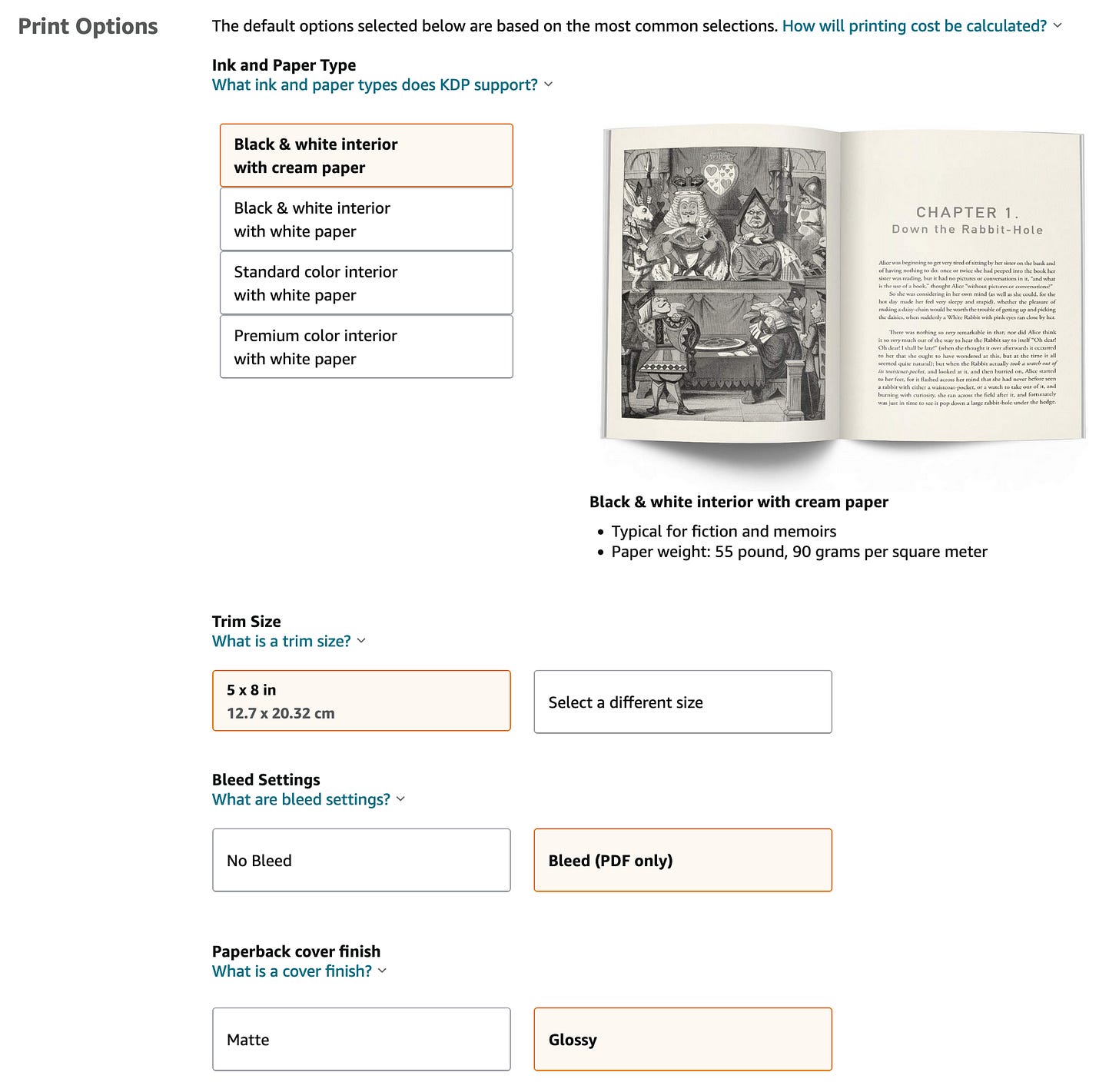Self publishing books
This post is a primer on self publishing books using Amazon. I've been helping on the tech-side of publishing a book (not as an author and not even a technical book) since the past month or so and I'll share my learnings.
Amazon kindle strategy
For ebooks, the amazon kindle ebook reader and kindle book store dominate the US market. From a platform perspective the readers are consumers. For producers, Amazon also works with book publishers to sell books. A product called Kindle Direct Publishing (KDP) helps authors self-publish books in their platform bypassing traditional publishers. This lowers the bar for entry into the book industry. To complete their book platform, amazon also owns Goodreads (for data on book reviews and readership) and other verticals on audio books, comics, and collectible books. Amazon started off as a company selling physical books and has grown into a massive behemoth. However the book market is still firmly in their grasp.
KDP
KDP supports creating books in multiple formats - ebooks, paperbacks and hardcovers. Physical paperbacks and hardcover books are printed on demand with no upfront capital requirements. More on pricing below.
The manuscript is usually written by authors using word processing software like Microsoft word, Apple pages. There are also custom authoring tools like Scrivener which help with collecting notes, researching and more.
For publishing, a manuscript has to be converted based on the format being output. For ebooks, KDP has software called Kindle Create which takes a word file as input and generates a custom kpf file format. Ebooks are typically in EPUB -like formats. EPUBs are actually zip files with embedded html and css for styling. Traditional long form text books are considered as "reflowable" formats since the readers can set custom fonts, have different device sizes. Most books require basic formatting templates, for titles, headers, bold and italics and other elements. Adding custom fonts is actually not recommended since device support is limited. Drop Caps are one of the fancier formatting techniques that are supported. With Kindle Create, you essentially create the front matter, body and back matter based on templates. These can be previewed on mock devices with different layouts, font sizes before releasing to customers. Beyond the book content, it is necessary to create a cover image for which specifications are published.
Creating paperbacks and hardbound is more complex. Books can be printed on different size paper (called trim size), ink (color or black and white) and also paper type (cream or white). Typically fiction and memoirs are black and white on cream paper, while non fiction is on white paper. If you have pages that are to be printed edge to edge and not within the margin of the page; then bleed settings are needed. Once you go through the matrix of options, you can set the page settings in the word processing software of choice. The manuscript can be exported to PDF which can be used as input for paperback and hardbound versions. There are also different cover page requirements (including back cover and spine) for physical books.
For all book formats, it is possible to preview changes. Physical books can be printed and ordered as proof copies for checking the final product. This is something that I've not yet done.
Pricing
Amazon pays a royalty of up to 70% for ebooks (after distribution costs) and 60% for physical books (after printing costs).
Amazon also has a monthly membership option called Kindle unlimited. If ebooks are read under that option you get paid some cents per page read. It's paltry revenue but you potentially get better reach to consumers. There are also exclusivity requirements.
The printing costs for physical books are relatively high. These can be checked in the online Pricing calculator. For a paperback with 300 pages, the cost of printing is $7.42 at amazon.com. At a sale price of $10.00 the author would earn $1.55. For a hardbound with 300 pages, the minimum price with no royalty is $15.17. The royalty would be 60% over the minimum price. With KDP it is possible to target international markets around Europe, Canada, Australia. Price sensitive markets like India and Brazil are only available for ebooks.
For most books, sales volumes are fairly low. Prices are mostly standard based on genre. You need scale of sales to make any meaningful revenue and otherwise mostly a labor of love. The good part about books is that once complete the project is done. There is no recurring maintenance like software. Like other content platforms, creators try to build connections with their audience and publish more content. Marketing matters to be able to get interest in your book. A royal family drama certainly helps.
Long term, authoring books feels like a dangerous career choice. Audiences are reducing since people spend more time on tiktok and youtube (and frankly more engaging formats) rather than reading long form books. AI tools are now generating art and I suppose some tools might already be writing novels. At the same time I'm also optimistic about the medium. I've rekindled (pun intended) my love for reading; especially physical books over ebooks. Understanding royalty has given me a new appreciation of the work of authors and the industry.

